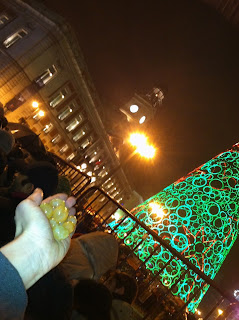July 16, 2010 - Lijiang, Yunnan, China

Pinyin: Niau bu sheng dan de di fang Translation: A place where birds don't lay eggs Meaning: We're "out in the sticks" Although we're following the Northern Tea Horse Trade route, I feel like we're following the 21st century backpackers ascent up to the Tibetan Plateau. Driving the 180 km (120 miles) from Dali to Lijiang this morning, we have increased elevation to 9,000 feet. Everyday in China, thousands of new cars hit the road. With the growing number of middle-class citizens who want to own vehicles, competency of drivers behind the wheel is minimal. This mornings 120 mile drive took five hours of dodging water buffalo, cattle, bike riders, pedestrians, but mostly clueless drivers. Lijiang, population 300,000, is located at the base of Jade Dragon Snow Mountain, which feeds a web of canals that once provided the local Naxi people fresh water. Along these canals are a maze of cobblestone streets and historical wooden buildings alive with thousands of people from around the world. A small sect of the Naxi ethnic minority group has been romanticized by Lonely Planet and local tour guides, so I might as well jump on the band-wagon. With their liberal partnership rules, women and men always remain living in their birth homes. The anzhu (friend) system allows the man to visit a woman at night and then return to his families home by day. When the relationship is over, both individuals will move on to a new anzhu. Any children born from this relationship remain with the mothers family and the father is only allowed limited responsibility. Most children do not know their father. A woman indicates to men she is anzhu-available by wearing a red flower in her hair. In 1996 a 7.2 earthquake rocked Lijiang, killing hundreds. The traditional Naxi notch-joint wooden homes and buildings were virtually unaffected by the natural disaster, while many modern cement buildings crumbled. The Chinese government decided to rebuild Lijiang using original Naxi wooden architecture. In 1999, the United Nations placed Lijiang County on the World Heritage list to promote preservation of the Naxi and their innovative building techniques. |



